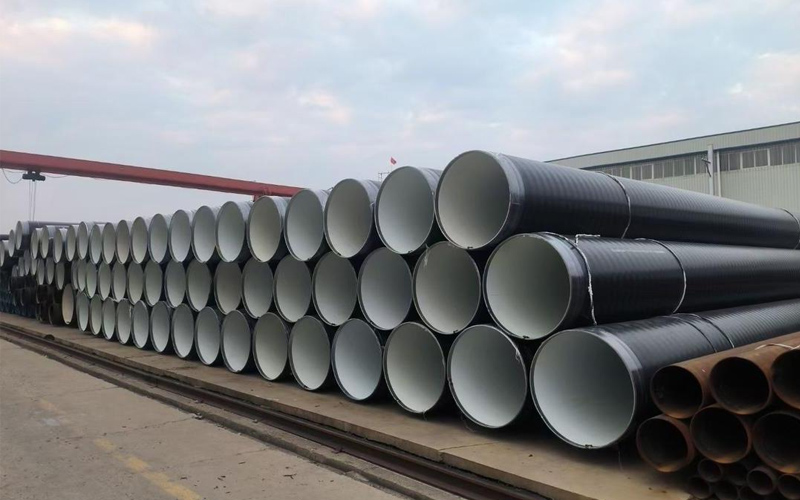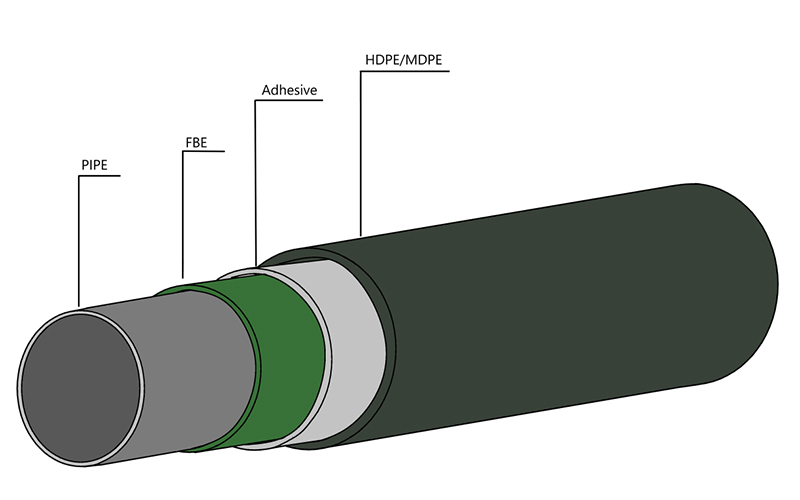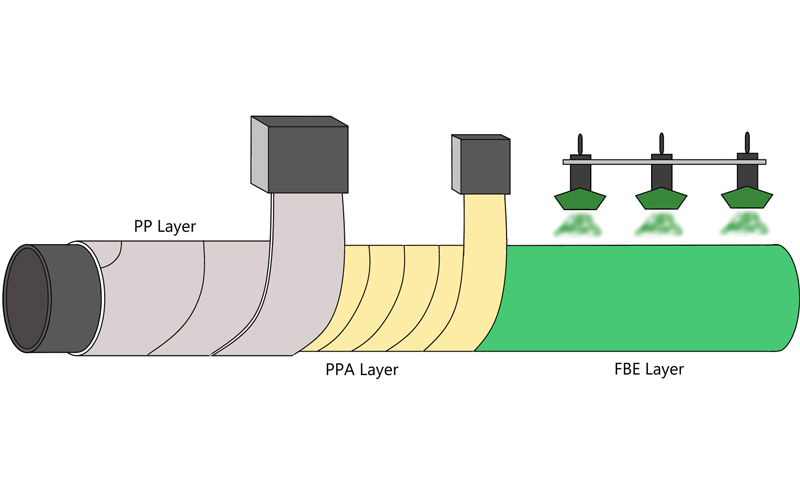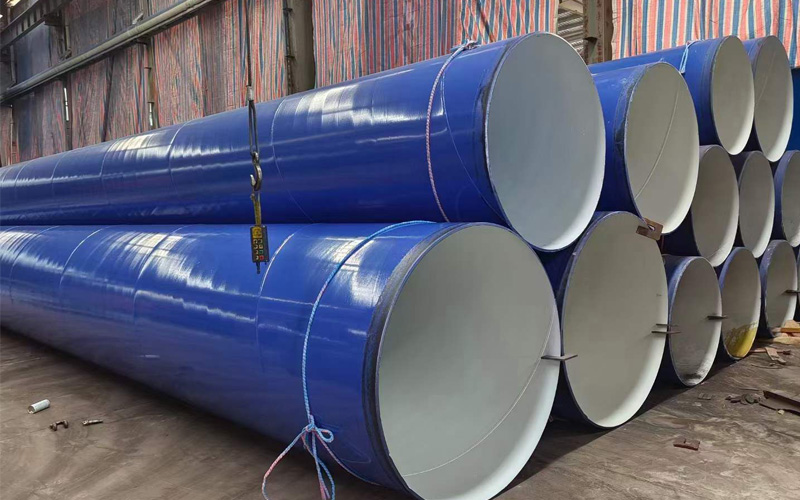LSAW Steel Pipe: UOE vs JCOE Process | Allland steel pipe
LSAW Steel Pipe : Comparing JCOE and UOE Methods – An Engineer’s Guide
In the context of modern energy construction and infrastructure, LSAW Steel Pipe (Longitudinal Submerged Arc Welded), as a form of weld pipe to meet high requirements on transportation efficiency and mechanizediping construction with international steel-pipe limitations, is becoming increasingly important in recent years. It is the material of choice for high performance applications ranging from long-distance oil, gas and water pipelines to the structural piles and offshore platforms which contribute to major infrastructural works. But LSAW pipes are not all the same. The core forming method (especially the UOE or JCOE) has decisive influence on production efficiency, cost and application range of line pipe.
It is important for project engineers and procurement specialists to know and understand the basic differences that make these two methods distinct from each other. This knowledge affects costs as applicable to procurement only but also project length and final quality of engineering. This article provides a comprehensive comparison of UOE LSAW steel pipe and JCOE LSAW steel pipe, outlining the complete manufacturing line for the production of LSAW pipes, as well as helping you to choose the right product based on your project requirements.
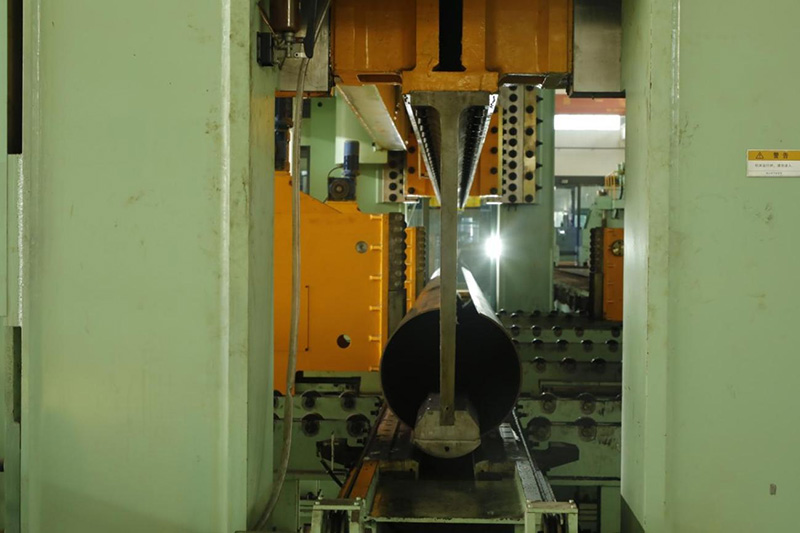
The Common Foundation of LSAW Pipe Manufacturing
To help understand the UOE vs JCOE approach we need to delve deeper into their common manufacturing base The basic steps that the two ways manufacturing LSAW Steel Pipe are following:
Ultrasonic Testing of Raw Steel Plate
1. Plate Inspection: Ultrasonic testing is used to ensure the raw steel plate is free of defects.
2.Edge Milling: A milling machine that profiles the edges of the plate exactly into welding groove profile as needed.
3.Edge Crimping/Pre-bending: this plate is chosen as the edges are bent before main forming so that a perfect curvature at pipe seam can be obtained.
4.Manufacture: This is the basic phase in which both UOE and JCOE differ from each other.
5.Tack Welding: The formed pipe seam is continuously tack-welded to control the outside diameter of pipe over final measurement.
6.Internal & External Welding: Multi-wire submerged arc welding (SAW) to both the inside and outside of the pipe forms establish the final longitudinal seam.
7.Inspection of Weld & Pipe Body: The pipe is re-inspected using ultrasonic testing (UT), X-ray inspection and visual checks.
8.Final Pass Mechanical Expanding(Optional but Essential)Mechanical expander relieve stresses from forming and welding, assuring the pipe to final dimensional accuracy and roundness.
9.Hydrostatic Testing — Thousands of gallons more water than the largest probable pumpage is used to test a short section of pipe for its ultimate strength and integrity.
10.Finishing & Coating: Beveled the pipe ends, inspection and painting or oil coating as client requirements.
Then, in part two, we take a deeper look at Step 4: forming and examine the major differences between UOE & JCOE.
A Closer Look: The High-Efficiency UOE LSAW Steel Pipe Method
The UOE process gets its name from its three key forming steps: U-ing, O-ing, and Expansion. It is a highly efficient, continuous production method, ideally suited for mass production.
The UOE Process Flow
1.U-ing: Following edge crimping, steel plate is immersed in a strong U-press. A top die is lowered to fasten the apical plate hedring into a “U” tool. This is followed by a rapid and aggressive kick, marking the start of O.
2.O-ing: The U shaped plate is moved directly onto the pressing machine O The press is essentially a large, split-die assembly that closes around the plate. When it shuts, it squeezes the sides of the “U” so that they melt together and begin to form what (very slowly and gently at first) closes into a nearly closed O-shape tube. The O-press is the characteristic of the UOE LSAW steel pipe process, and it provides power to attain ideal roundness well before welding.
3.Expansion: This pipes that are already welded are moved to a mechanical Expander. A radial pressure is applied from the inside (by means of an expander head), causing a minimum permanent plastic deformation with 1.0%-1.5% growth in diameter over pipe size – thus reinstating its ovality to close to its initial condition. This not only gives an accurately sized outside diameter, but more importantly puts the pipe in a stress-relieved state so that it size is generally stable with the other mechanical properties across time.
A Closer Look: The Flexible JCOE LSAW Steel Pipe Method
Where UOE was the big, single-blow hammer that did it all in one shot, JCOE is more of an artisan. The name Expansion just comes from their building steps: J-ing, C-ing, and O-ing (as expanded) too. A revolutionary technique with remarkable versatility.
The JCOE Process Flow
1.J-C-O Progressive Forming: This is the heart of the JCOE LSAW pipe manufacturing process. Instead of performing dedicated U and O presses, JCOE involves passing the plate through a single press brake machine that bends it in multiple small steps into a pipe formed shape.
2.J-ing: the press die starts on one side of the plate, pressing at set distances to bend it back and forth into a “J” shape with flared ends.
3.C-ing: The same process is repeated on the reverse side of the plate, resulting in a complete formation of an open “C”.
4.O-ing:Finally, additional minor adjustments and more press strokes bring the “C” shape opening to further closure forming an “O” rounded shape. It’s all computer-controlled and each press stroke angle and position is calculated exactly as needed.
5.Expanding : Same as in UOE process, pipes made with JCOE process are also physically expanded following the welding to finalize specifics dimensional accuracy and stress relief.
UOE vs JCOE: A Head-to-Head Comparison
For a clearer understanding, the table below summarizes the core differences between the two manufacturing processes:
| Feature | UOE Process | JCOE Process |
| Forming Principle | Two-step plastic deformation using powerful, dedicated U and O presses. | Multi-step, progressive forming using a single press brake. |
| Production Efficiency | High. Continuous process, ideal for large-scale, standardized production runs. | Lower. Step-by-step operation, better suited for small to medium batches. |
| Equipment Investment | Very High. Requires two massive, specialized press machines. | Lower. Requires only one versatile press brake. |
| Flexibility | Low. Changing pipe sizes requires expensive, dedicated die sets. | Very High. Can produce different sizes by adjusting the press program. |
| Diameter Range | Range is relatively fixed and less flexible. | Extremely wide range, excels at producing large diameter LSAW steel pipe. |
| Wall Thickness | Highly adaptable, especially suitable for heavy-wall pipes. | Adaptable, though forming extra-heavy walls can be more challenging. |
| Tooling Cost | High. Each diameter requires a specific, expensive die set. | Low. One set of dies can be used for a wide range of diameters. |
| Product Precision | Very High. The powerful O-press ensures excellent roundness. | High. Precision depends on advanced computer controls and operation. |
Advantages, Limitations, and Applications
UOE LSAW Steel Pipe
·Advantages: Extremely high production efficiency and output per unit of time; consistent product dimensions and high quality; perfect for meeting the urgent demands of massive pipeline projects requiring standardized LSAW Steel Pipe.
·Limitations: Huge equipment investment leads to higher production costs for smaller orders; inflexible for switching between production sizes, making it unsuitable for small-batch, multi-spec orders.
·Typical Applications:
·Long-distance oil & gas pipelines: Major national and international projects (e.g., cross-country gas pipelines).
·Subsea pipelines: Offshore projects with stringent demands on quality consistency and delivery speed.
·Large-scale slurry pipelines.
JCOE LSAW Steel Pipe
·Advantages: Very Flexible manufacturing, can make non-standard size and large diameter LSAW steel pipe very easily; low tool cost-low set up cost- good for smaller quantity ordered; best suit for tailer made specification.
·Limitations: Production efficiency rather low, and not applicable to urgent mega-projects; a high degree of dependence on precision of product with advanced equipment.
·Typical Applications:
·Structural Pipe (Airport, Stadiums, Bridges and High-rise Buildings foundations)
·Process Piping:used in power plants and petrochemical facilities.Water supply and heating networks (urban infrastructure by type)
·Offshore Platform Structures.
How to Choose the Right Process for Your Project
When choosing an LSAW pipe manufacturing process, as an engineer or a procurement manager chooses it:
1.PROJECT SIZE IS WHAT: UOE is a more economical solution if you need tens or hundreds of thousands of tons of one-spec pipe. When you are for some thousands of tons or less number of demand over sizes then JCOE stands as perfect.
2.Standard vs Custom dimensions:While it is true that they are able to produce pipes to conform to standard and well-known grade standards like API 5L, for single diameter or wall thickness specifications designed for a structure, JCOE will often be the only option available.
3.Type of project Timeline Budget : One attractive feature of the UOE is that it can be mass-produced for lower unit cost and quicker delivery. Advantages: The JCOE is characterized by low investment and is more suitable for the situation that the cost budget or order quantity of customer has limitation.
Conclusion
Thus, UOE and JCOE processes complement each other, in their suitability for different applications — meaning that no one of them can be said to be absolutely “better” than the other. In general, UOE always stand for the most efficient and large scale pipe production while all of JCOE only represents flexibility and customization. They are the two pillars of the modern LSAW Steel Pipe industry, capable of producing top-of-range products that meet even if not exceed definitive market standards.
Having a fundamental grasp of the primary contrasts in the UOE vs JCOE process allows you to combine this with other factors to make more informed planning and procurement decisions, allowing you to acquire not just a product but also an integrated solution specifically fit for your project.
Sourcing LSAW Steel Pipe for your next project? Allland steel pipe possesses expert knowledge of both UOE and JCOE manufacturing. Whatever your project’s specifications, we can provide the most competitive technical solutions and quotations. Contact us today and let our expertise ensure the success of your project.
Get Your Custom Steel Pipe Quote Today!
Provide us with your project details (like application, specifications, quantity). Our experienced team will respond with a tailored solution and competitive quote within 24 business hours.
Related Articles
ASTM A53 vs. API 5L: A Guide to Selection and Application
Introduction:Technology differences determine success or failure, and selection needs to be “precise”
Steel Density Analysis: Core Differences between Mild and Medium Carbon Steels and Industrial Applications
3LPE coated steel pipe: a solid barrier in the field of industrial corrosion protection
3LPP coated pipe: anti-corrosion guard in high temperature and high pressure environment
FBE steel pipe: the technological armor of the steel defense line
HOT TAGS
latest posts
- Steel Density Analysis: Core Differences between Mild and Medium Carbon Steels and Industrial Applications
- Carbon Steel Floating Pipeline Systems: Innovative Applications of LSAW/SSAW Steel Pipes in Marine Engineering
- LSAW Steel Pipe: UOE vs JCOE Process | Allland steel pipe
- Onshore Pipeline: A Complete Selection Guide
- 3PE Pipe Coatings: A Guide to Protection, Standards&Applications











